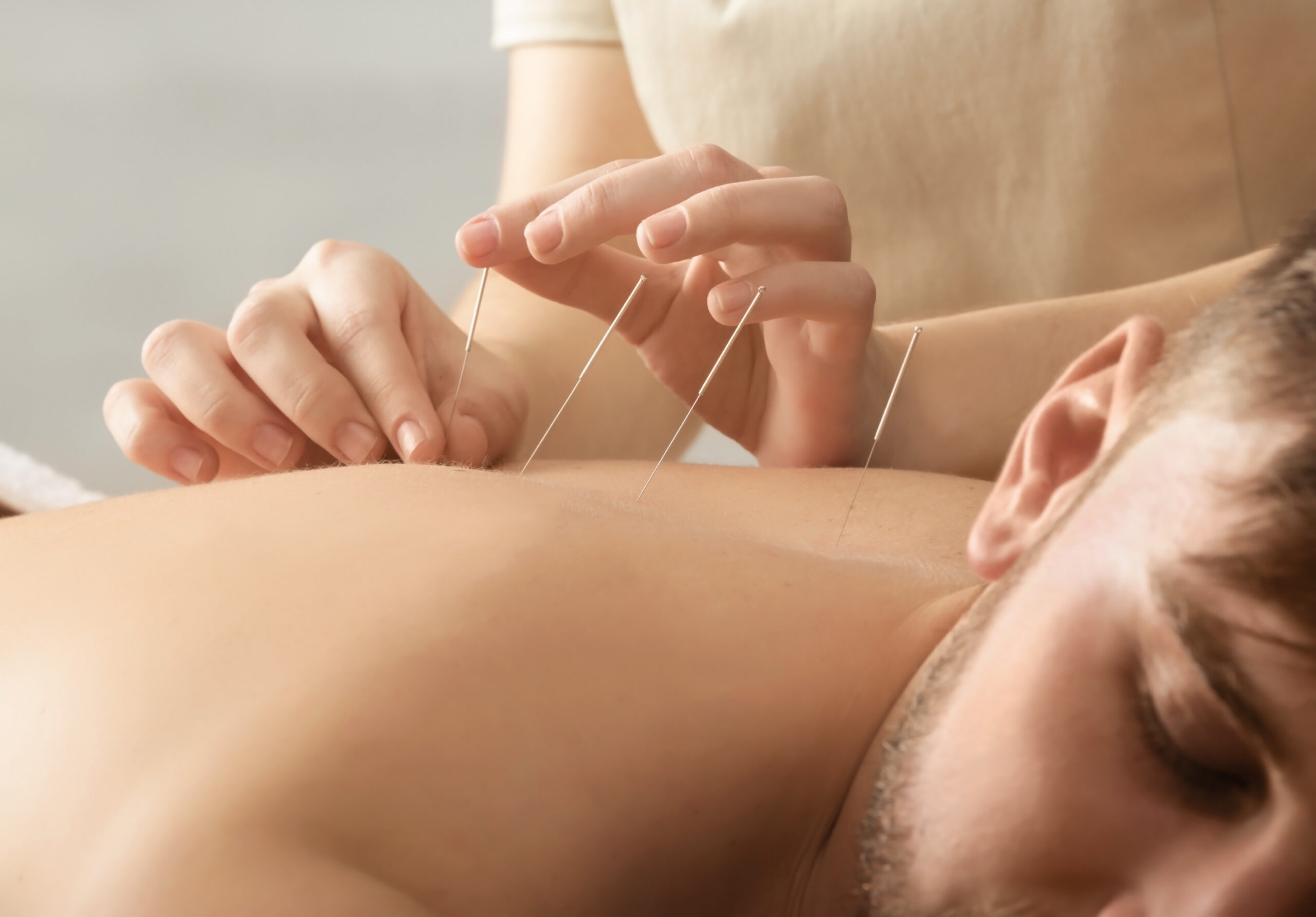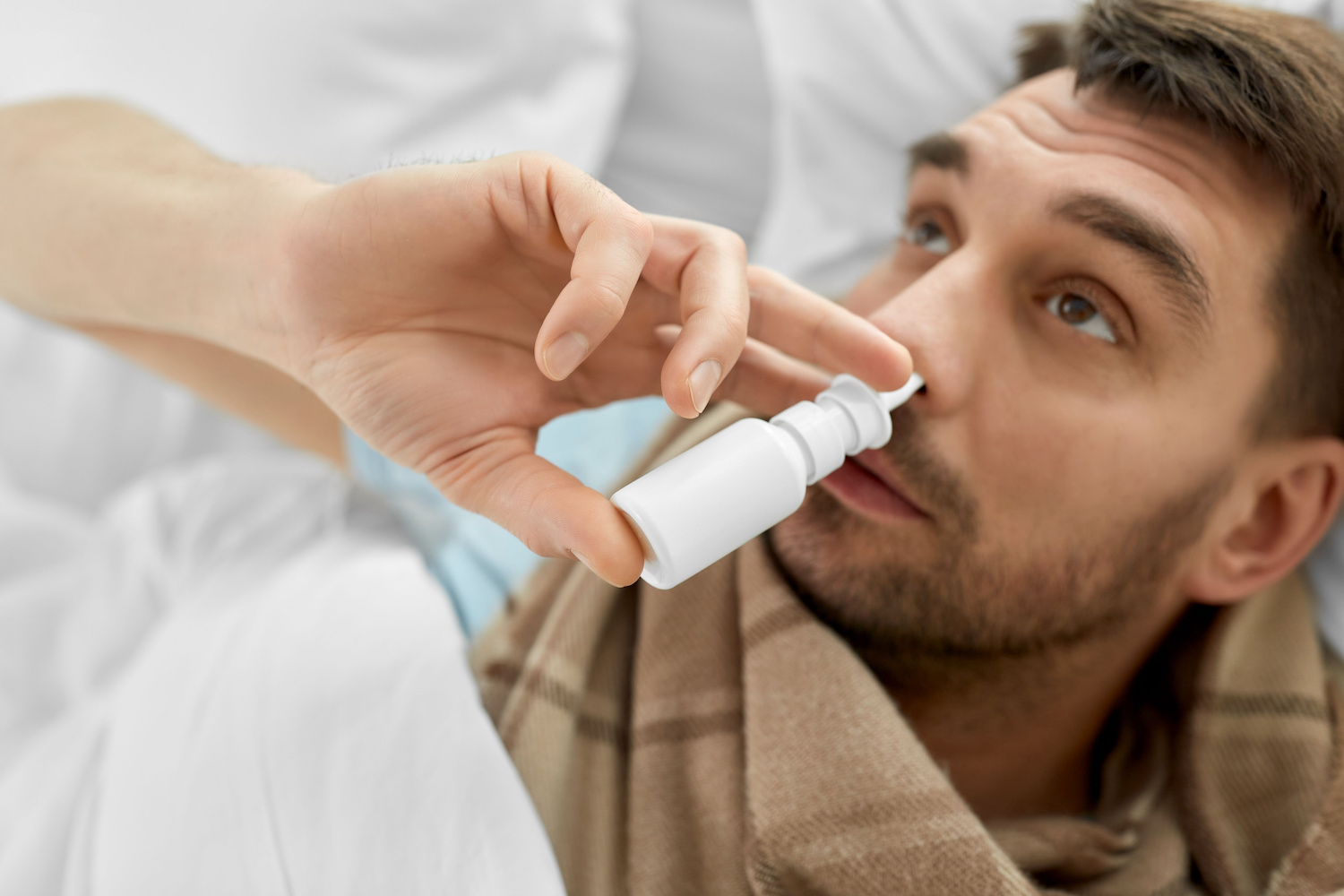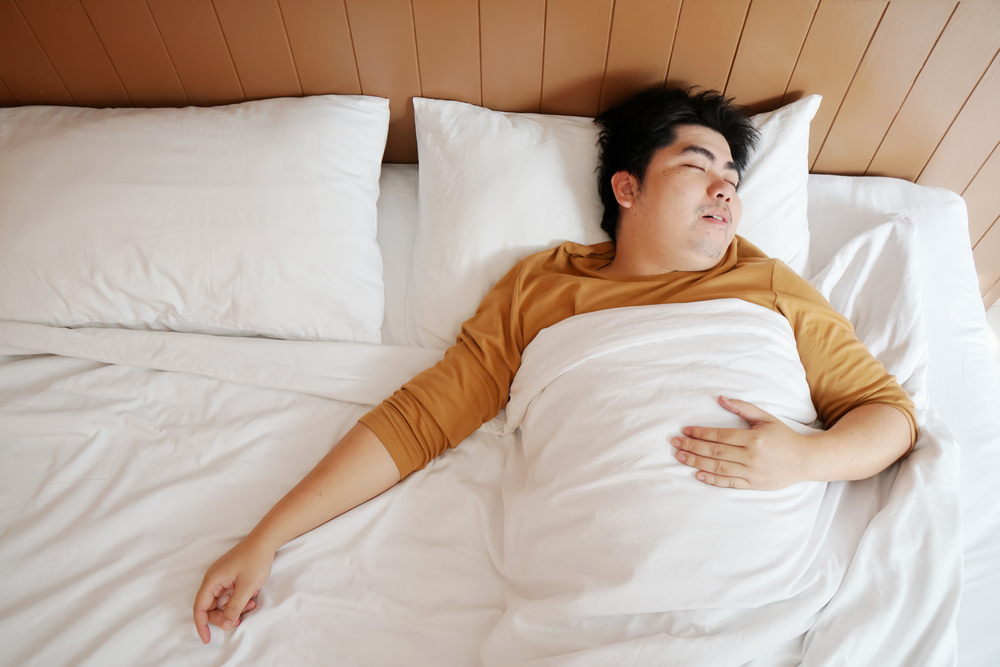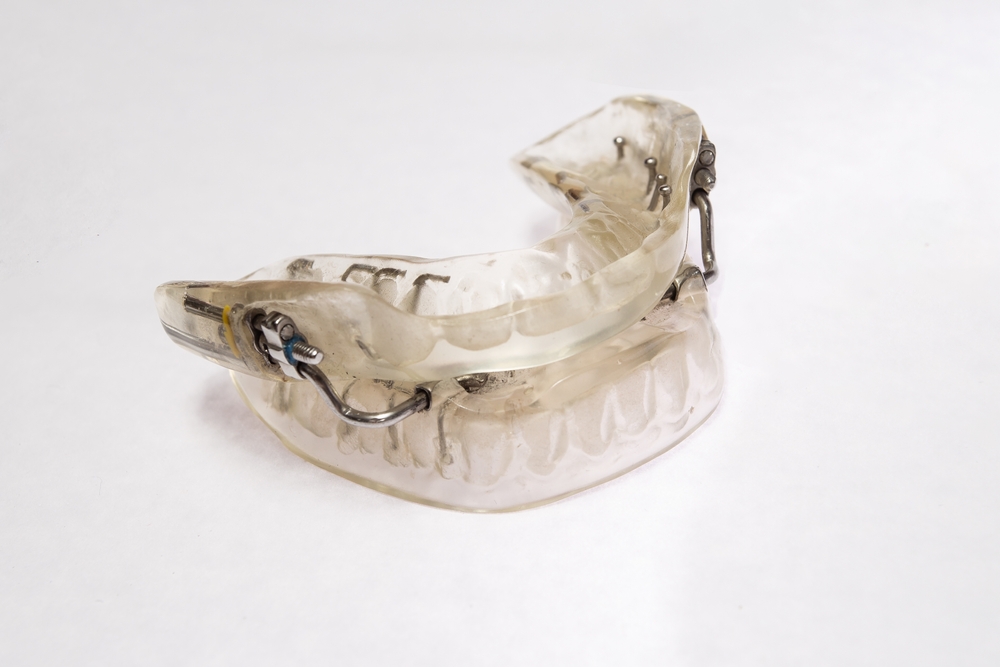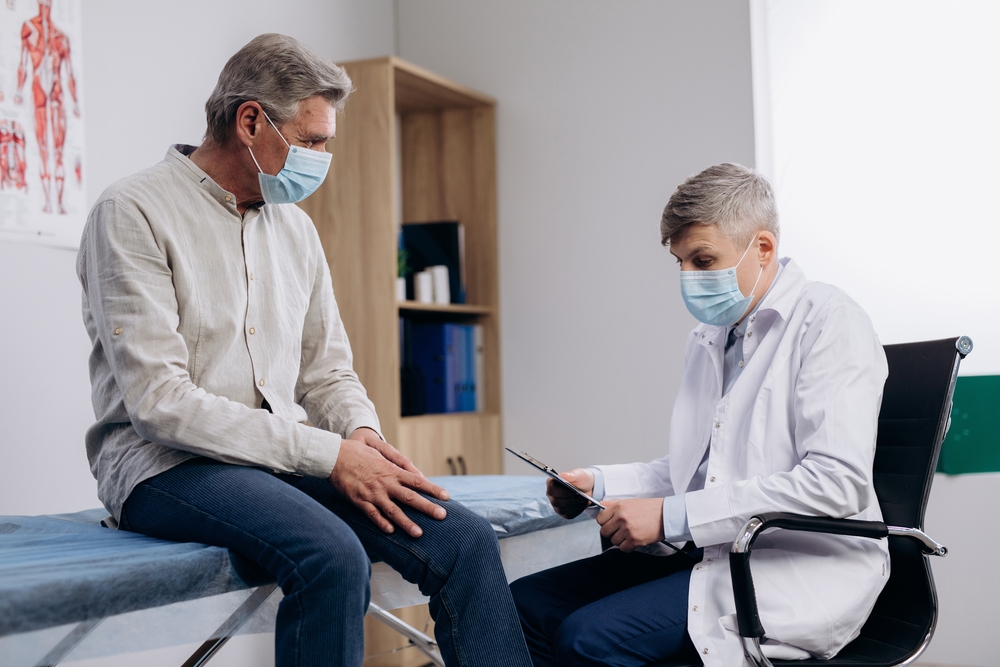Hypoglossal nerve stimulation is a treatment option for some people with obstructive sleep apnea. Also called upper airway stimulation, this treatment involves having surgery to place a small medical device under the skin. The device generates light electrical pulses that activate muscles in ways that help keep the airway open during sleep.
We take a closer look at hypoglossal nerve stimulation for obstructive sleep apnea, including how this treatment works, who may be a good candidate for it, and what the recovery and follow-up process may look like for people who have this treatment.
What Is Hypoglossal Nerve Stimulation?
Hypoglossal nerve stimulation is a surgical treatment for obstructive sleep apnea that may be available to people who don’t have success with other treatments.
Once a person is assessed to determine if hypoglossal nerve stimulation is appropriate, a surgical procedure to implant a small medical device under the skin is performed. After the surgery, the device is used to help stimulate specific nerves and muscles in order to prevent the airway from collapsing as a person sleeps.
How Does Hypoglossal Nerve Stimulation Work?
Hypoglossal nerve stimulation works by using a small medical device implanted in the body to send electrical impulses to the hypoglossal nerve during sleep. The hypoglossal nerve controls the movement of the tongue. Because the tongue can draw back toward the airway during sleep, tongue positioning can directly affect breathing at night.
Stimulating the hypoglossal nerve causes the tongue to move forward in the mouth. This keeps the tongue from collapsing back and narrowing or blocking the airway. In addition, as the tongue moves forward, it alters the positioning of other structures in the mouth and throat, further increasing space for air to move without obstruction.
Rather than continuously stimulating the hypoglossal nerve, a sensor tracks a person’s breathing so that the device can send a quick pulse of electricity as they are beginning to inhale. Well-timed stimulation of the hypoglossal nerve has been found to reduce the breathing interruptions characteristic of obstructive sleep apnea.
What Are the Components of the Device?
A hypoglossal nerve stimulation device has several components.
- Generator: An implantable pulse generator is a small device placed under the skin below the collar bone. The generator creates the electrical current that stimulates the hypoglossal nerve. It contains a battery that typically lasts for around 10 years before needing to be replaced.
- Stimulation electrodes: A wire connects the generator to electrodes that are wrapped around the hypoglossal nerve and other nerves below the jaw. The stimulation electrode delivers the electrical pulse created by the generator to the appropriate nerves.
- Breathing sensor: This sensor detects when a person inhales in order to coordinate when the electrical impulse should be delivered to keep the airway open. Older models of this device required the breathing sensor to be implanted near the ribs. In newer models, the breathing sensor is located in the generator.
Hypoglossal nerve stimulation devices also come with a small remote control. The remote control allows the user to turn the device on and off as needed and enables them to adjust the level of stimulation. The remote also contains data that doctors can use to monitor whether a person is using the device as directed.
Although several variations of a hypoglossal nerve stimulation device have been developed, only one has been approved by the Food and Drug Administration (FDA) for use in the United States. Other devices are still being studied.
What Is the Procedure for Hypoglossal Nerve Stimulation?
Surgical placement of the hypoglossal nerve stimulation device is usually an outpatient procedure, which means that a person doesn’t need to spend the night in the hospital. The surgery is performed under general anesthesia so that a person is unconscious during the procedure and does not feel any discomfort.
During the procedure, two small cuts are made in the skin that allow the surgeon to place the generator in the upper chest and the stimulation electrodes are placed around the intended nerves.
After the procedure, doctors use imaging tests to ensure that there are no complications. Once the anesthesia has worn off and doctors have checked for any adverse reactions, a person is able to go home to continue their recovery.
What Is the Recovery After Hypoglossal Nerve Stimulation?
During recovery, it’s important to temporarily limit physical activity and reduce movement of the arm and shoulder near the implanted device. It’s common to feel a small amount of discomfort shortly after surgery, which doctors usually recommend treating with over-the-counter pain medication. Infections and other more serious complications of surgery are uncommon.
Doctors will schedule a follow-up appointment to turn on and program the hypoglossal nerve stimulation device, usually around six weeks after the surgery. During this appointment, the doctor will activate the device and ensure that it works. If the device doesn’t function as expected, the doctor may perform imaging tests to find the source of the problem.
Once the device is working properly, the doctor will program several of the device’s functions.
- Functional threshold: The functional threshold is the minimum strength of the electrical impulse needed to shift the tongue far enough forward to maintain an open airway. The doctor will determine the functional threshold by progressively increasing the level of stimulation until the tongue moves into the proper position.
- Start delay: The doctor will program the device’s start delay, which is the time between being turned on by the user and when the generator begins to stimulate the hypoglossal nerve. The goal is to have the device start sending electrical pulses after a person falls asleep, so most often the start delay is set around 30 minutes.
- Pause time: This function is programmed for how long the pulses will pause if a person wakes up during the night. Many users set this function to around 15 minutes, allowing them enough time to fall back asleep before nerve stimulation begins again.
- Maximum run time: A doctor will program the device so that it works for a set number of hours each night. The maximum run time is usually set for eight hours.
After everything is programmed, the doctor will then teach the person how to use the device’s remote control at home. With these directions, the user can power the device on and off, pause it if they wake up at night, and adjust the strength of the electrical impulse.
Doctors typically instruct people to use the device every night for one to three months to get used to the treatment. They will also provide instructions on when and how much to increase the strength of the device’s electrical impulses. This helps to determine the amount of electrical stimulation needed to normalize breathing but not trigger discomfort or interfere with sleep.
It is usually suggested that people not increase the strength of electrical impulses more than one level per week. People who adjust their device more than one level per week may notice discomfort, causing them to temporarily discontinue treatment.
In a second follow-up several months after surgery, the doctor makes sure the device is effective. This appointment may include questions about a person’s symptoms, any issues that make it difficult to use the device, and a sleep study to confirm the device's effectiveness and fine-tune its settings.
When Is Hypoglossal Nerve Stimulation Used to Treat Sleep Apnea?
Hypoglossal nerve stimulation is used to treat obstructive sleep apnea when people don’t have success with other treatments.
The initial treatment for adults with obstructive sleep apnea is typically positive airway pressure therapy, most commonly with a continuous positive airway pressure (CPAP) device. CPAP therapy prevents the airway from collapsing during sleep by using a stream of pressurized air generated in a bedside device and pumped through a mask.
Although CPAP machines are effective in keeping the airway open during sleep for most people, some sleepers find this treatment uncomfortable or have trouble using their device consistently. In these cases, doctors may recommend treatments like oral appliances, surgery, or hypoglossal nerve stimulation.
Who Can Benefit From Hypoglossal Nerve Stimulation?
Hypoglossal nerve stimulation may be an option for people with moderate to severe obstructive sleep apnea who have already tried using a CPAP or a similar device. Additional criteria for hypoglossal nerve stimulation include being over the age of 18 and having a body mass index (BMI) less than 35.
Doctors may be cautious about using hypoglossal nerve stimulation in certain people, including:
- Pregnant people
- People with certain medical conditions affecting the nerves and muscles
- People at risk of complications from general anesthesia
- Individuals with mental health conditions that make it difficult to follow directions for nightly use of the nerve stimulation device
- People with other sleep disorders that aren’t being treated effectively
Hypoglossal nerve stimulation is not a treatment option for other types of sleep apnea, including central sleep apnea. This treatment may not be suitable for people who have both obstructive and central sleep apnea.
Before recommending hypoglossal nerve stimulation, a doctor will conduct an imaging test called an endoscopy. This test uses a small camera to examine the tissue within the throat to check for any anatomical reasons why hypoglossal nerve stimulation would not be effective in their situation.
For any individual, a doctor or sleep specialist is in the best position to review the potential benefits and drawbacks of hypoglossal nerve stimulation and other treatment options for sleep apnea.



